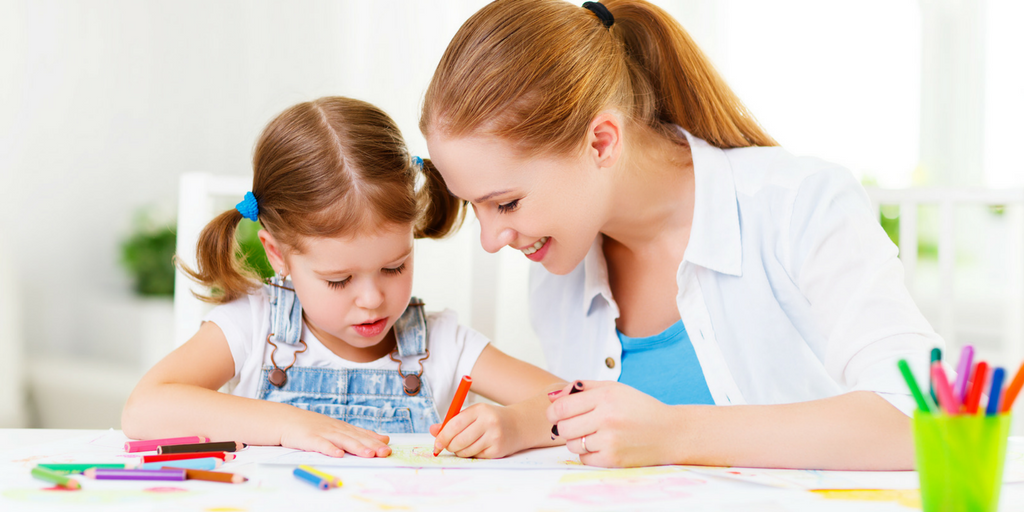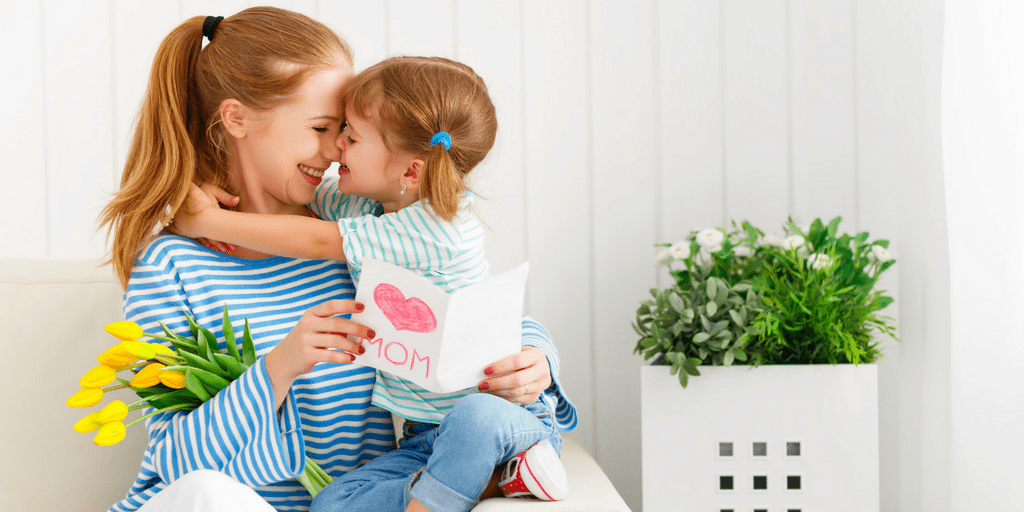
This post may contain affiliate links. Read my whole disclosure here.
Inside: How to help an anxious child to deal with intense feelings – 5 powerful strategies that can make a difference for a child who struggles with fears or worries.

My son was standing in front of that door, looking so helpless. He turned around and looked at me with his big brown eyes.
“I don’t want to go there!”, he said, “Can we please not go?”
We were in front of his new preschool room. We were scheduled for a meeting to speak with his new teacher and get to know her.
And he was so happy about going to preschool in the days before the meeting! But once we got there, things suddenly seemed very real for him, and this made him feel very scared.
“Tell me what you feel”, I said.
“I feel like my tummy hurts, and I just want to go back in the car.”
“This is normal”, I told him and took his little hand between my hands.
“Is it?”
“Yes, of course! When we face a big change in our lives, we sometimes feel scared and worried. This happens to me too.”
The expression on his face suddenly changed, as if it felt so good to hear that!
“But we need to meet the teacher today, as we agreed”, I continued. “You will not be alone, I will be with you the whole time.”
He gave me a little smile and squeezed my hand. He had sweety hands as he always has when he is nervous.
“How can I help you feel better about this meeting?”, I asked.
“Can you hold my hand all the time?”
“Of course!”
“And can you ask her if there are any big kids here that hit younger kids like me?”
He had this fear for some time, ever since a colleague from the previous preschool he went to was aggressive towards young kids like him. This was probably the main reason why he felt so afraid and worried.
“Sure”, I replied. “And I will also ask her how she can help in case another child bothers you like this to make sure that you’ll always have her support. What do you think?”
“That’s perfect!”, he said, and his voice was already more joyful.
We entered the room, and during the first minutes, he stood very close to me, holding my hand. Then he started to relax and look at the teacher. After a while, he saw an awesome parking garage for toy cars and asked if he could play with it.
By the time I ended my discussion with the teacher, he was happily playing in the other corner of the room. When we left, he even shook hands with the teacher and smiled at her.
On our way home, I told him everything that I’ve discussed with her. About the daily schedule, the classroom rules, the big kids that are not allowed to hit young kids. 🙂
He didn’t answer anything, so I didn’t really know what to think. But as we got out of the car, he looked at me and said:
“I’m glad that we went to meet the teacher! And I can’t wait to go there again to play some more with the garage!”
I felt so relieved! I smiled, and he started running to our front door, happy and relaxed as if he never had any worries!
How to help an anxious child: Dealing with anxiety is a skill that kids need to learn.
Young kids are often overwhelmed by fears or worries that might seem difficult to understand for a grown-up. But for them, these feelings are real and intense! And they need our support to learn how to deal with them!
My son had several moments of anxiety along the time, and I think this is valid for every child. He was worried about starting preschool, he was afraid to spend a night without me, he was scared of the dark (and he still is sometimes), and so on.

What really helped me be supportive and understanding was the fact that I have fought anxiety both as a child and as an adult.
I know how it is to be worried about things that other people don’t consider worth worrying about. I know how it is to feel afraid when everyone tells you that you have nothing to be scared of.
This was really hard for me, especially as a child. But my struggle with anxiety helps me understand my son’s feelings better. And it has determined me to search for the best ways to help him overcome these intense feelings.
How to help an anxious child: The most helpful tips for helping kids calm down
I’ve gathered here the most helpful tips that I’ve discovered and used with my son. They really work, and they can make a difference for a kid who feels scared or worried.
1. Be supportive without judging the child’s feelings
Sometimes we are tempted to dismiss the child’s fears and worries when we don’t really understand them. Using phrases like “You have nothing to be scared of” or even making fun of the child’s vulnerability can do a lot of harm.
Instead, what really helps is being supportive. The child needs to hear that you are there for them. That you understand how frightened they are. And that you’ll do your best to help them.
Sometimes a hug and some kind words can make miracles!

2. Ask the child how you can help
This shows the child that you are really committed to supporting him. And it gives them the chance to focus on solutions that will make them feel better.
Sometimes kids’ requests may seem silly. But they matter!
They can ask us to look under the bed to see if there is any danger there. To reassure them over and over again that we will always come to pick them up from preschool. To hold their hands when they enter a crowded room at a party.
These small gestures matter to them! And they can give them the confidence they need to overcome the anxiety!
There will be times when you will not be able to do what the child asks.
For example, if the child is afraid to go to the preschool and asks you to stay there with them all the time. In this case, you can help the child find alternative options that are possible: spending 15 minutes together in front of the classroom, coming to pick him up early in the first days, asking the teacher to offer him some additional support, and so on.
3. Focus on connection instead of “fighting” the fear
In many cases, the first reaction that we have in front of our kids’ fears and worries is to “fight” them. We try to convince the kids that they have nothing to worry about, we give rational arguments against the fear, we explain why their feelings are not justified.
But this is not what the children need!
In those moments of intense anxiety, they only need to connect with us. They need to feel understood and supported.

So the first step should always be to make the child feel safe and connected. Only after those overwhelming feelings are more manageable, we can start focusing on helping the child overcome them.
Here is an example that I think is a great illustration of this idea:
Imagine one moment when you felt very sad, and you cried in front of a friend. Did it help if your friend would tell you that you shouldn’t cry? If your friend would give you a list of reasons why you shouldn’t be sad? Or if your friend would just dismiss your feelings and tell you that everything will be okay?
I don’t think so. Instead, it would help a lot if your friend would hug you and let you cry in their arms as long as you need. Of course, that talking can help, but only after a person feels safe and connected. It works exactly the same with children and their anxiety.
4. Create a character that personalizes the child’s worry
Kids love stories, and they have great healing power! So if your child worries often, you can create an imaginary character (like Monster Worry or whatever you want to name it) and talk about it.
You can explain to the child that sometimes Monster Worry comes to us, and it makes us feel scared and helpless. And that every time this little monster comes to them, they can come and talk with us about it.
Children sometimes struggle with expressing their feelings, but they are more likely to talk about them if we create a playful context.
When “Monster Worry” or “Monster Fear” come to my son, I use the opportunity to encourage him to talk about them. How do they make him feel? How big is the “monster”? What can we do to “fight” it?
You can also encourage your child to draw the monster. Or you can create a story about a child who fought the same worry and managed to overcome it after a while.

Another playful way to deal with anxiety is to create a Worry Box.
Encourage the child to let you know every time they feel scared or worried. Then take a piece of paper and write the child’s worry (or let the kids write it if they are old enough). Invite the child to place the note in the box as a first step towards letting go of it.
This is just a first step, and it doesn’t solve the problem, but it offers you a lovely ritual that encourages your child to express the intense feelings and ask for your help.
5. Create a step-by-step plan to help the child overcome the anxiety
We tend to avoid putting our kids in situations that we know can cause them anxiety. This is a good strategy in some cases, but in most of the cases, this doesn’t really help.
Our job is not to protect kids from everything that can cause anxiety, but to offer them the tools they need to overcome it.
Often the best approach is to create a step-by-step strategy that encourages the child to take little steps towards facing and overcoming the anxiety.
Let’s say that the child is afraid of going on a big slide. The strategy can include these steps:
- Going to the park to observe other kids using the big slide
- Discussing the dangers that the child sees and trying to find ways to avoid them
- Encouraging the child to go on other slides that seem less dangerous to him to build up confidence
- Going on the slide together with the child
- Encouraging the child to take his favorite stuffed animal and go on the slide with it
and so on.
This is just a very simple example, but it illustrates the concept pretty well. You can create similar strategies for bigger worries and fears too.
If we are patient and we don’t try to hurry the child through these phases, there are great chances that this strategy will work.
And it will not only help the child overcome a particular anxiety, but it will teach them how to approach their worries and fears in the future.
In the end, I want to mention a very important thing about anxiety.
It can be that no matter how many efforts you make, the child is simply not ready to overcome a particular anxiety. This is not a failure for you, and it’s certainly not a failure for the child.
Sometimes kids are not prepared to overcome some anxieties, and all we can do is offer them our unconditional support until they are ready to do it. Because this support is the most important thing in the process of helping an anxious child!
More parenting tips:
- How to help young kids deal with strong emotions in a gentle way {+ printable}
- What to do instead of punishments: 5 gentle ways to discipline young kids

photo credit: Evgeny Atamanenko / shutterstock.com






